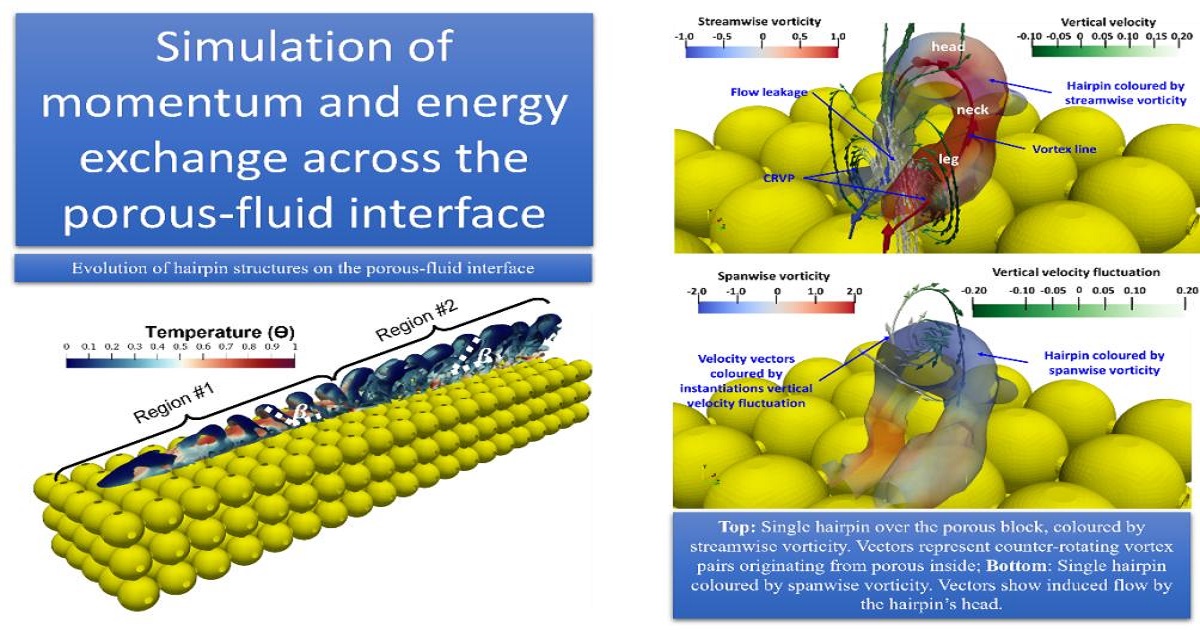Advanced Simulation of Turbulent Flows and Heat Transfer
A special issue of Energies (ISSN 1996-1073). This special issue belongs to the section "J1: Heat and Mass Transfer".
Deadline for manuscript submissions: closed (31 December 2024) | Viewed by 4835

Special Issue Editors
Interests: turbulent flow and heat transfer; energy storage; compressors for hydrogen/air storage; aeroacoustics and hydrogen combustion
Interests: turbulent flows; heat transfer
Interests: multiphase flow and heat transfer in energy systems
Special Issue Information
Dear Colleagues,
Turbulent flows and heat transfer are intricate phenomena that play a pivotal role in various industrial applications, ranging from aerospace and automotive engineering to energy production and environmental engineering. Accurately modeling and simulating these processes is crucial for ensuring system efficiency, safety, and sustainability. This Special Issue, ‘Advanced Simulation of Turbulent Flows and Heat Transfer’ aims to present and disseminate the latest advancements in this crucial field by inviting researchers and engineers from across the globe to showcase their cutting-edge research, innovative methodologies, and groundbreaking discoveries.
We particularly encourage submissions that utilize artificial intelligence and machine learning in turbulent heat transfer and advanced computational methods, including large eddy simulation (LES), direct numerical simulation (DNS), Reynolds-averaged Navier–Stokes (RANS) models, and hybrid approaches. Topics of interest include, but are not limited to, the following:
- Numerical modeling, with an emphasis on contributions that enhance the fundamental understanding of turbulent heat transfer processes and their application to engineering problems;
- Application of artificial intelligence and machine learning in turbulent heat transfer;
- Turbulent heat transfer in multiphase and porous flows;
- Flow and heat transfer in biological systems;
- Instrumentation and novel fluid measurement techniques;
- Renewable energy;
- Energy storage systems;
- Cooling techniques;
- Combustion, fire, and fuels;
- Heat pipes and heat pumps;
- Modeling of environmental flows in natural and built environments;
- Applications of nano and micro fluids;
- High-fidelity simulation.
We look forward to receiving your original research papers, empirical studies, or theoretical analyses.
Dr. Yasser Mahmoudi Larimi
Dr. Mohammad Jadidi
Dr. Hongbing Ding
Dr. Mohammadhadi Hajilou
Guest Editors
Manuscript Submission Information
Manuscripts should be submitted online at www.mdpi.com by registering and logging in to this website. Once you are registered, click here to go to the submission form. Manuscripts can be submitted until the deadline. All submissions that pass pre-check are peer-reviewed. Accepted papers will be published continuously in the journal (as soon as accepted) and will be listed together on the special issue website. Research articles, review articles as well as short communications are invited. For planned papers, a title and short abstract (about 100 words) can be sent to the Editorial Office for announcement on this website.
Submitted manuscripts should not have been published previously, nor be under consideration for publication elsewhere (except conference proceedings papers). All manuscripts are thoroughly refereed through a single-blind peer-review process. A guide for authors and other relevant information for submission of manuscripts is available on the Instructions for Authors page. Energies is an international peer-reviewed open access semimonthly journal published by MDPI.
Please visit the Instructions for Authors page before submitting a manuscript. The Article Processing Charge (APC) for publication in this open access journal is 2600 CHF (Swiss Francs). Submitted papers should be well formatted and use good English. Authors may use MDPI's English editing service prior to publication or during author revisions.
Keywords
- free/forced convection
- conjugate heat transfer
- phase change materials
- instability and heat transfer
- environmental applications of heat transfer
- energy engineering
- heat transfer enhancement
Benefits of Publishing in a Special Issue
- Ease of navigation: Grouping papers by topic helps scholars navigate broad scope journals more efficiently.
- Greater discoverability: Special Issues support the reach and impact of scientific research. Articles in Special Issues are more discoverable and cited more frequently.
- Expansion of research network: Special Issues facilitate connections among authors, fostering scientific collaborations.
- External promotion: Articles in Special Issues are often promoted through the journal's social media, increasing their visibility.
- Reprint: MDPI Books provides the opportunity to republish successful Special Issues in book format, both online and in print.
Further information on MDPI's Special Issue policies can be found here.








